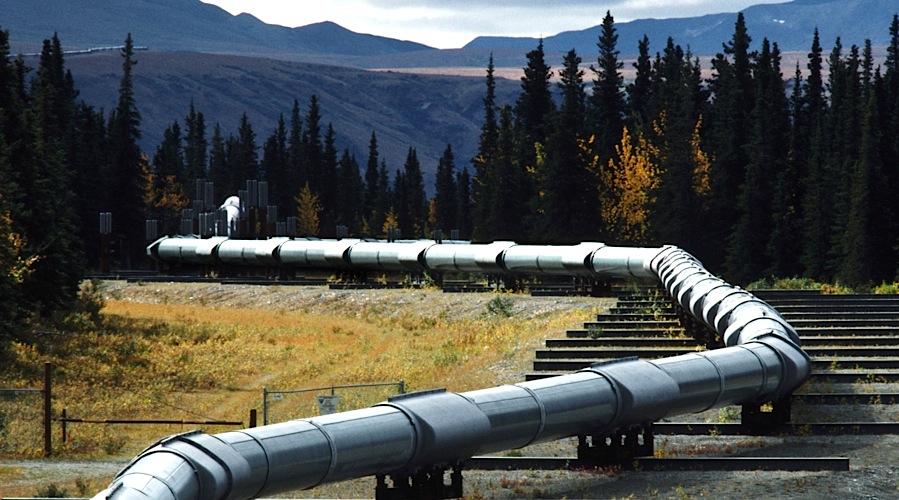
Canada will need more pipelines built through to 2030 to transport an additional 1.3 million barrels per day of oil sands production to markets across North America and around the world, according to the Canadian Association of Petroleum Producers (CAPP).
In its 2017 Crude Oil Forecast, Markets and Transportation report, release Tuesday, the group predicts that overall Canadian oil production will grow to 5.1 million b/d in 2030, up from 3.85 million b/d in 2016. This 1.3-million-b/d growth will be driven by a 53-per-cent increase in forecasted oil sands production of up to 3.7 million b/d in 2030 from 2.4 million b/d in 2016.
“The urgent need for new pipelines to increase our competitiveness continues to be one of the biggest challenges facing our industry. Without access to emerging new markets we’re putting our economy at risk,” said CAPP President and CEO Tim McMillan. “It is imperative we get our oil to markets in all directions to ensure fair market value for our natural resources, and provide the world with a source of safe, reliable, and secure energy from Canada.”
Conventional oil production is expected to remain flat, producing 884,000 b/d on average throughout the outlook.
New offshore production from the Hebron project in Newfoundland and Labrador, expected at the end of 2017, will contribute to a rise in eastern Canadian output to 307,000 b/d by 2024, but thereafter, due to natural declines, forecasted production will drop to 186,000 b/d by 2030.
The projected growth will exceed the existing pipeline transportation capacity, highlighting the urgent need for pipelines heading east, west, and south. Today, the pipeline network can transport 4 million b/d of oil and oil products but by 2030 it will need to move more than 5.5 million b/d. Increased pipeline capacity to reach more Canadians and new, growing markets around the world will ensure Canada remains globally competitive.
Capital spending in the oil sands is expected to decline for the third consecutive year to $15 billion in 2017 from $34 billion in 2014. Drilling by conventional crude oil producers is forecast to increase 70 per cent compared to 2016 levels, but will still be 40 per cent lower than in 2014.
At present, Canada’s oil industry faces a number of challenges tempering long-term growth prospects, including uncertainty related to provincial and federal climate change policies in Canada, potential protectionist policies in the U.S., and diverging regulatory efficiencies between Canada and the U.S.
Among its biggest challenges continues to be pipeline constraints. In the past year pipelines such as the Trans Mountain Expansion Project, Enbridge Line 3, and Keystone XL have been approved and, when built, will provide much-needed pipeline capacity to access North American and Asian markets. However, Energy East – a portal connecting Canada to Europe and beyond – is still needed to further connect Canada’s growing supplies to diverse markets.
Earlier this month CAPP released the Global Energy Pulse, its first-ever international research into world views on oil, natural gas, Canada and the world’s energy future. Among the key findings, Canada ranked No. 1 as the preferred supplier for oil and natural gas to global markets.
The 2017 Crude Oil Forecast, Markets and Transportation report can be downloaded here.
Figures to keep in mind:
• The International Energy Agency reports oil represents 31 per cent of the world’s energy demands and continues to be the largest energy source through to 2040.
o China’s and India’s combined demand growth is 10.1 million b/d – equal to more than 90 per cent of the world’s increased demand from 2015 to 2040.
• About 99 per cent of Canadian exports – over 3.3 million b/d in 2016 – is exported to the U.S., while less than one per cent is shipped overseas.
• Since 2008 the U.S. has added 4.4 million b/d of oil to its energy portfolio, making it both Canada’s biggest customer and its biggest competitor.
• In 2016 Canada imported 613,000 b/d into Atlantic Canada, Ontario and Québec from the U.S., Saudi Arabia, Algeria, Angola, and Norway.
• CAPP’s annual forecast is based on a survey of our producing members, and uses a methodology that accounts for historical and future capacities. Data was collected from producers in March and April 2017.
The Canadian Association of Petroleum Producers (CAPP) represents companies, large and small, that explore for, develop and produce natural gas and crude oil throughout Canada. CAPP’s member companies produce about 80 per cent of Canada’s natural gas and crude oil. CAPP’s associate members provide a wide range of services that support the upstream crude oil and natural gas industry. Together CAPP’s members and associate members are an important part of a national industry with revenues from crude oil and natural gas production of about $120 billion a year. CAPP’s mission, on behalf of the Canadian upstream crude oil and natural gas industry, is to advocate for and enable economic competitiveness and safe, environmentally and socially responsible performance.